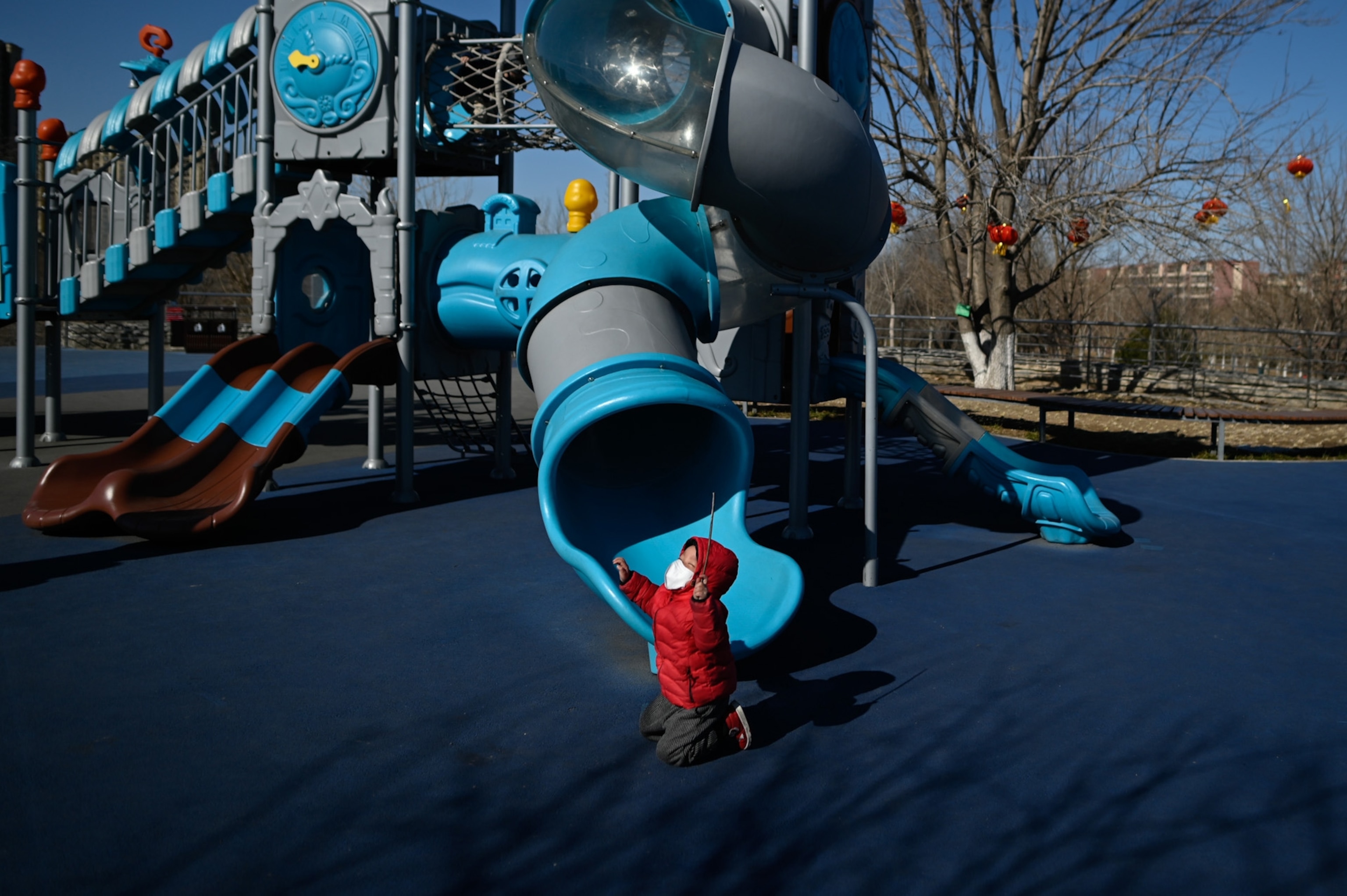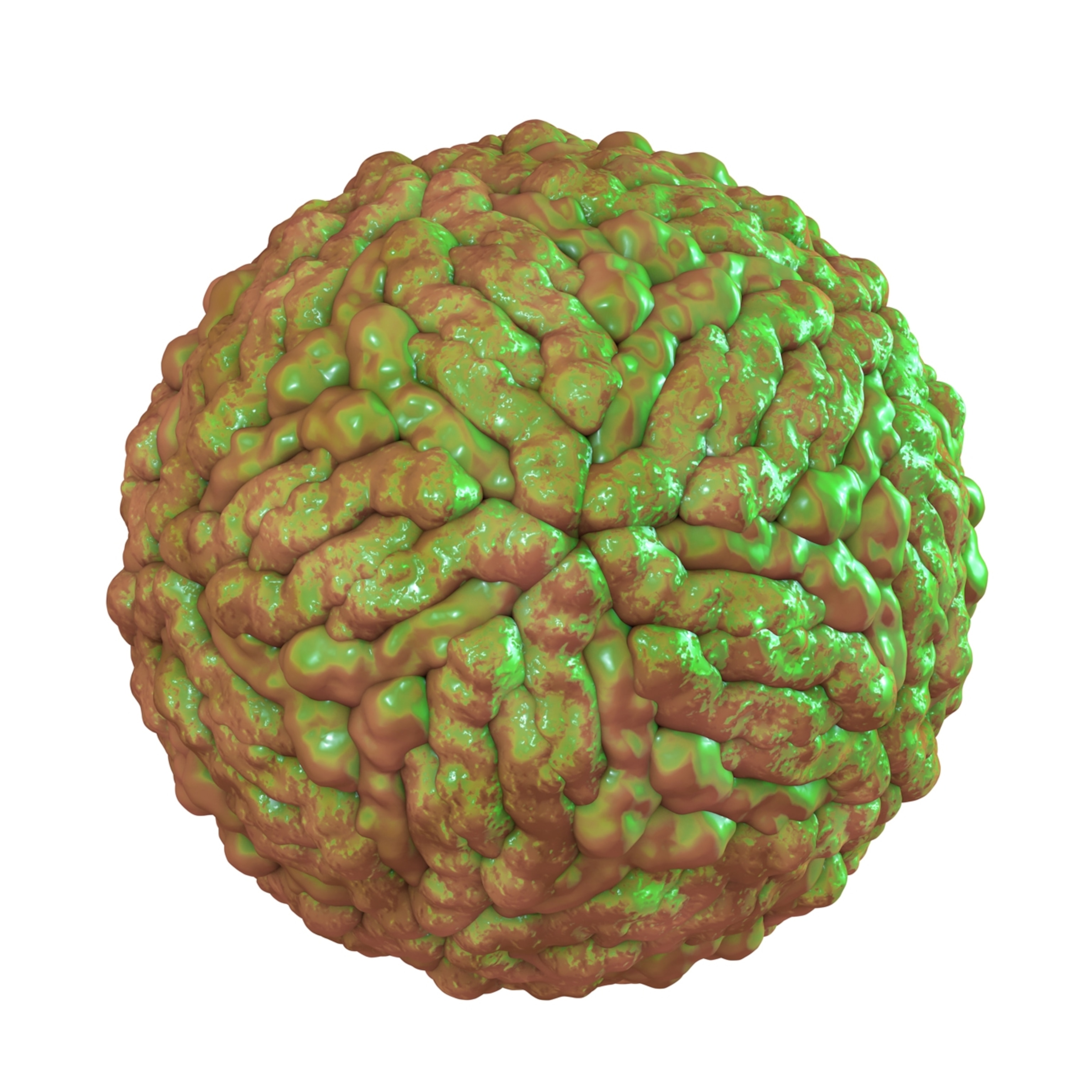
The coronavirus spares most kids. These theories may help explain why.
Experts weigh in on the biological reasons children could be better protected from severe cases of COVID-19.
Across geographies, genders, and occupations, the new coronavirus is an indiscriminate infector. COVID-19 appears to plague people ubiquitously—including children who, despite hopeful early reports, do not seem more immune to the virus. The latest figures from China, where the outbreak began last year, suggest that those under the age of 18 may contract the pathogen at comparable rates to adults.
But a mysterious semblance of mercy remains: After being infected, kids seem less likely to fall seriously ill, with more than 90 percent of pediatric cases presenting as moderate, mild, or without symptoms entirely. This youthful resilience has been seen in infectious diseases before, such as chickenpox.
At this point, individuals with notable symptoms make up the bulk of those getting screened for SARS-CoV-2, the virus behind the pandemic. Many people with mild or no symptoms have likely gone undetected, and as global testing efforts rev up, the reported rates of severe disease in children could still change.
On March 24, Los Angeles County public health officials reported the death of a teenager, believed to be the first coronavirus-related death of a United States minor. Still, early testing results tell us that it’s “very likely that kids are affected less,” says Eric Rubin, an infectious disease researcher and physician at Harvard’s School of Public Health and editor-in-chief of the New England Journal of Medicine.
A pattern similar to this emerged during outbreaks of SARS and MERS: Those two severe respiratory diseases, also caused by coronaviruses, seemed to largely spare kids. Scientists and clinicians still have much to learn about the new virus and the immune system’s defenses against it—but untangling why SARS-CoV-2 is less severe in children could help experts suss out new ways to combat the spread of the disease.
“The way to beat this virus is to really understand the biology, and how we respond to the virus,” says Gary Wing Kin Wong, a pediatric pulmonologist at the Chinese University of Hong Kong and an author of a recent study about the prevalence of COVID-19 in children. “Then, we can tackle it at all levels.”
The immune system’s delicate balance
All infectious diseases spark a biological war in the body between malignant microbes and a potent army of immune molecules. Under ideal conditions, the immune system purges the body of pathogens without causing too much collateral damage to healthy human cells. But any number of factors can perturb this delicate balance. Weakened or worn out immune systems may be unable to mount a robust enough response, allowing invasive germs to wreak havoc. In other cases, overzealous immune reactions can sometimes do more harm than the pathogens themselves.
Adults may be feeling COVID-19’s effects more severely than children because their immune systems fail to find the middle ground between an insufficient and an excessive response, Rubin says.
Elderly individuals, who so far comprise most COVID-19-related deaths, may be worse off because their immune systems have begun to wane. Unlike kids, adults also commonly suffer from underlying conditions, such as diabetes or heart disease, that can weaken their bodies’ illness-fighting abilities.
The aging body is a lot like “a car that’s been running for 15 years—not in good shape,” Wong says. “When an invader comes, it may be able to cause faster destruction.”
Very immature immune systems could be at risk as well, because they haven’t had time to develop responses to a wide array of pathogens. Although cases of COVID-19 among infants are still uncommon, a study in China of 2,143 children (under age 18) diagnosed with the disease found that the majority of severe or critical cases were five years old or younger.
After a few years of aging up, however, children’s immune systems may reach a sort of just-right status, growing strong enough to keep an infection in check without overreacting. Many of the worst cases of COVID-19 in adults appear to result from hyperactive immune responses that end up destroying healthy cells alongside infected ones, which may be less common in children. Wong compares these unfettered attacks to dispatching an entire battalion of tanks to deal with two burglars robbing a house: “You end up destroying the whole village.”
When prior exposure helps—or hurts
SARS-CoV-2 is one of seven coronaviruses known to infect humans. Two of the others, which are responsible for SARS and MERS, can also be deadly; the rest are relatively benign, causing only common colds in the vast majority of cases.
Kanta Subbarao, a virologist and pediatric infectious diseases physician at the Peter Doherty Institute for Infection and Immunity in Melbourne, suspects prior exposure to milder coronaviruses may play a role in kids’ comparative COVID-19 edge over adults. Immersed in schoolyard environments, children may be constantly generating antibodies to these petty pathogens—and those antibodies may be versatile enough to fight off the new coronavirus, too.
Prior experience fighting off a coronavirus may not always be a good thing, however. When a pathogen invades the body, antibodies will recognize unique features of that specific microbe, latch on to its surface, and disarm it before feeding it to a white blood cell, which destroys it. The strategy is highly effective when the antibodies are a perfect fit for a virus. But when these same antibodies only partially recognize a pathogen, they may fail to fully incapacitate it. The virus can then infect the white blood cell that consumes it, facilitating the spread of the disease.
This Trojan horse-like phenomenon, in which the immune system inadvertently helps a virus infect healthy cells, is called antibody-dependent enhancement (ADE). The process has been shown to occur with dengue virus and Zika virus, and a few early studies suggest that coronaviruses might use it as well.
If this is the case, ADE may help explain why the new coronavirus is more deadly to adults, whose immune systems flare up more drastically to an infection. But evidence of this process isn’t definitive, experts say. SARS-CoV-2 also doesn’t seem to have a particular predilection for infecting white blood cells, the main subgroup that viruses using this tactic generally target, Rubin says.
A key protein in the spread of COVID-19
By zooming in on the cells the new coronavirus does target, however, scientists have developed another theory for why the disease may affect adults more acutely. Like its relative SARS-CoV-1 (which causes SARS), SARS-CoV-2 kickstarts infection by glomming on to a protein called ACE2. That protein is found on the surfaces of cells throughout the body, but especially in certain parts of the lungs and small intestine.
Some researchers have hypothesized that kids’ lung cells could make fewer—or perhaps even differently shaped—ACE2 proteins. If true, this developmental quirk in children could easily hamstring the virus as it tries to infect cells and spread.
But Rachel Graham, an epidemiologist and virologist specializing in coronaviruses at the University of North Carolina at Chapel Hill, points out that coronaviruses don’t need much ACE2 to infiltrate cells—and less of the protein isn’t always better. Counterintuitively, one of ACE2’s many functions involves boosting our defenses against viruses that attack the airway by disabling an enzyme that contributes to tissue destruction. Rodent studies also suggest ACE2 levels decrease with age, which may contribute to older people’s weakened ability to fight off respiratory diseases.
Early days
Researchers don’t yet have a good handle on which of these theories—if any—might explain kids’ apparent resilience to COVID-19. “I think it’s an open playing field,” Rubin says. “We just don’t know.”
A slew of non-age-related variables complicate matters further, such as a person’s genetics, local environment, medications, and more. “Each of these factors are probably partly responsible for the end result,” Wong says. “Figuring out a biological system is going to take time.” But doing so will be crucial to curb the pandemic, and perhaps outbreaks yet to come.
“This is the third example of an animal coronavirus that has caused severe disease” in humans, Subbarao says. “It’s very important that we understand this so we can prepare better for the future.” For now, she adds, “we can take some comfort from the data that children are not [frequently] getting severely ill. That should be reassuring to parents.”
However, Subbarao and other experts caution that people with mild or no symptoms can still spread the new virus to others. Children themselves may not be particularly at risk of succumbing to severe disease, Wong says, but “they may be an important factor in causing the pandemic to propagate.”
Parents should keep their kids informed and urge them to practice good hygiene, Graham says. As school and daycare closures increase, children are reducing contact with each other—but perhaps even more important is restricting kids’ interactions with vulnerable loved ones, like grandparents.
Though these behavioral changes aren’t easy, children can be motivated to make them. Kids “have an innate instinct toward compassion,” says Maryam Abdullah, a developmental psychologist and parenting program director at the University of California, Berkeley’s Greater Good Science Center. “There’s this myth that disasters bring out the worst in people. But we see time and time again … children wanting to [offer] support and help. That’s something we need to hold on to now more than ever.”








